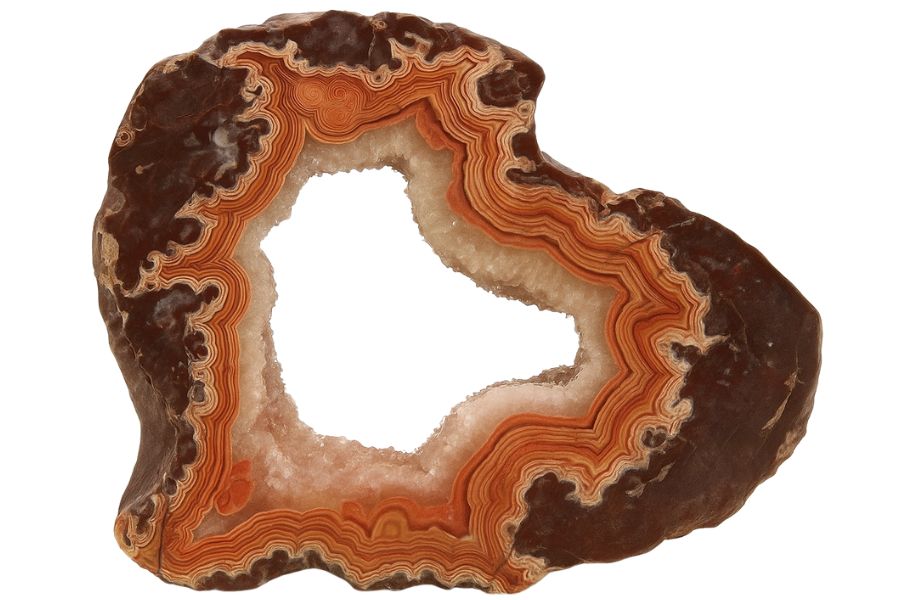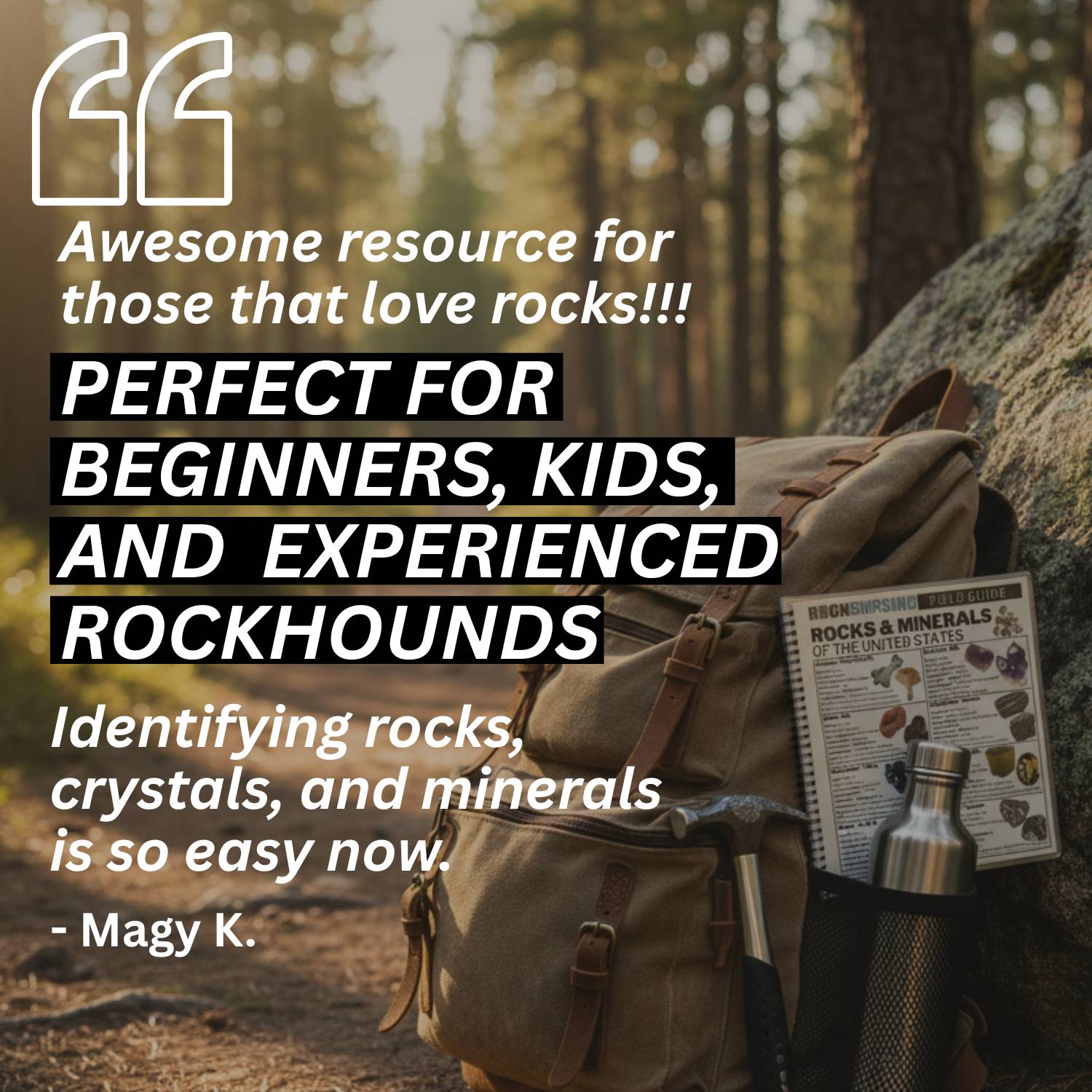Finding agates Montana is a lot easier than in many places around the country. From its vast plains to its winding waterways, the state is a prime destination for anyone seeking these natural treasures. With a little patience, you can start noticing the subtle details that set them apart.
Some areas are especially promising because they gather stones in ways that make agates easier to notice. Gravel bars, riverbeds, and exposed piles of material are worth your time if you slow down and scan carefully. Even in plain sight, these stones can hide until the light hits them just right.
We will provide you with all the information you need to begin your search. We can help you navigate the landscape and understand what to look for when you are out there. Knowing where to start looking can help you go home with a great agate collection!
What is Montana Agate?
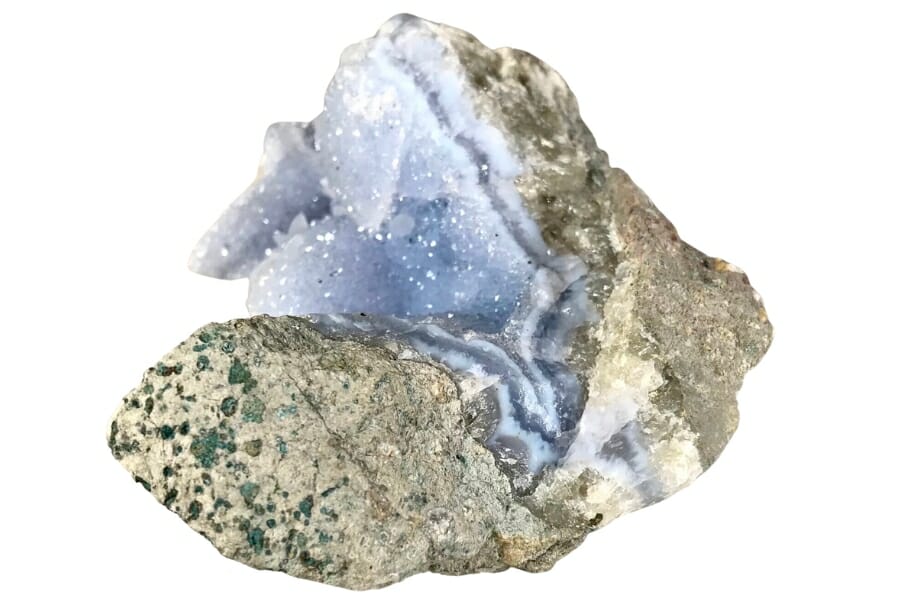
Agate is a fascinating type of rock that’s known for its cool, striped patterns and vibrant colors. It’s a form of quartz, a common mineral that you can find almost anywhere on Earth.
What makes agate special is how it’s made. Imagine a hole or a crack in a rock. Over a really long time, like millions of years, liquid minerals seep into the hole and slowly harden. As different minerals seep in over time, they create layers, forming the unique bands or stripes that these gems are famous for.
Agates are found worldwide, typically in places that have or once had a lot of volcanic activity. That’s because the heat and movement from a volcano can create the perfect conditions for them to form. They’re also commonly found in areas where rivers or waves have washed away the softer rock, leaving the hard agates behind.
And guess what? Montana is one of those places where you can find agates abundantly! Before starting your exploration, you might be interested to know the worth of an agate. Check out our article on the value of agates based on its different types.
Blue Lace Agate
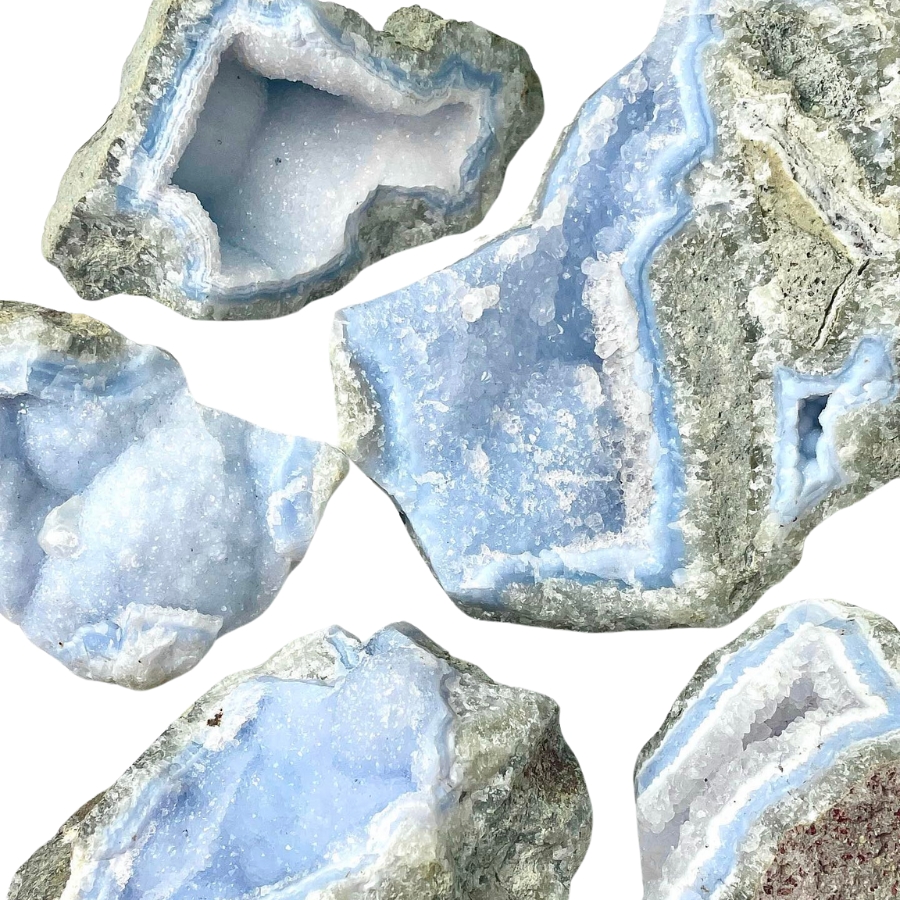
Blue lace agate is like the soft, sky-blue waves with lines that swirl and twist like delicate lace.
Its pattern comes from slow-forming layers of quartz, which create those beautiful, lace-like bands.
The bands of this agate type are often in shades of light blue, white, and sometimes a bit of grey. It’s different from other agates, which usually have more intense colors and stronger patterns.
The value of blue lace agate lies in its soft, tranquil look and the feeling of calm it brings. It’s often used in jewelry or as a decorative stone.
If you want REAL results finding incredible rocks and minerals you need one of these 👇👇👇
Finding the coolest rocks in isn’t luck, it's knowing what to look for. Thousands of your fellow rock hunters are already carrying Rock Chasing field guides. Maybe it's time you joined the community.
Lightweight, mud-proof, and packed with clear photos, it’s become the go-to tool for anyone interested discovering what’s hidden under our red dirt and what they've already found.
Join them, and make your next rockhounding trip actually pay off.
What makes it different:
- 📍 Find and identify 140 incredible crystals, rocks, gemstones, minerals, and geodes across the USA
- 🚙 Field-tested across America's rivers, ranchlands, mountains, and roadcuts
- 📘 Heavy duty laminated pages resist dust, sweat, and water
- 🧠 Zero fluff — just clear visuals and straight-to-the-point info
- ⭐ Rated 4.8★ by real collectors who actually use it in the field
Moss Agate
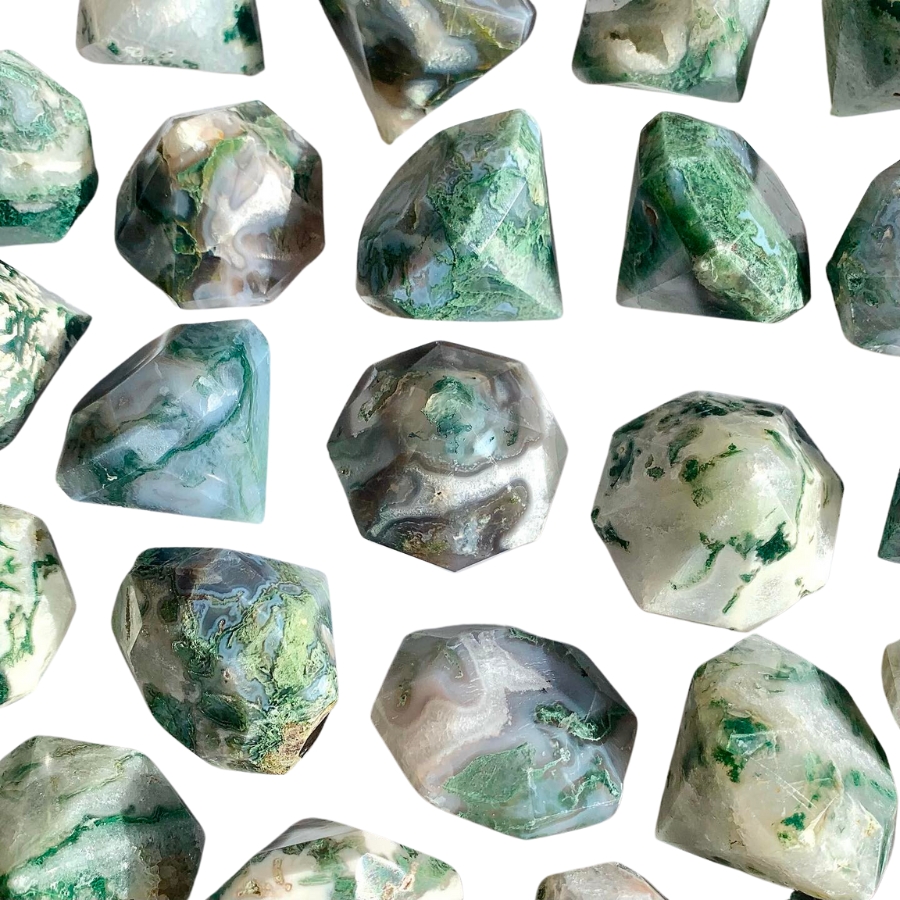
Instead of having the typical banding for which the different types of agates are known, moss agate has green inclusions that look like moss or trees.
These green patterns aren’t real plant material, though. They’re minerals like chlorite or iron oxide.
In some cultures, this type of agate is known as the “gardener’s stone” because of its green, plant-like appearance. It’s believed to help plants grow.
The price of moss agate can vary. It’s often quite affordable, but the more distinct and picturesque the green patterns, the more it might cost.
Fire Agate
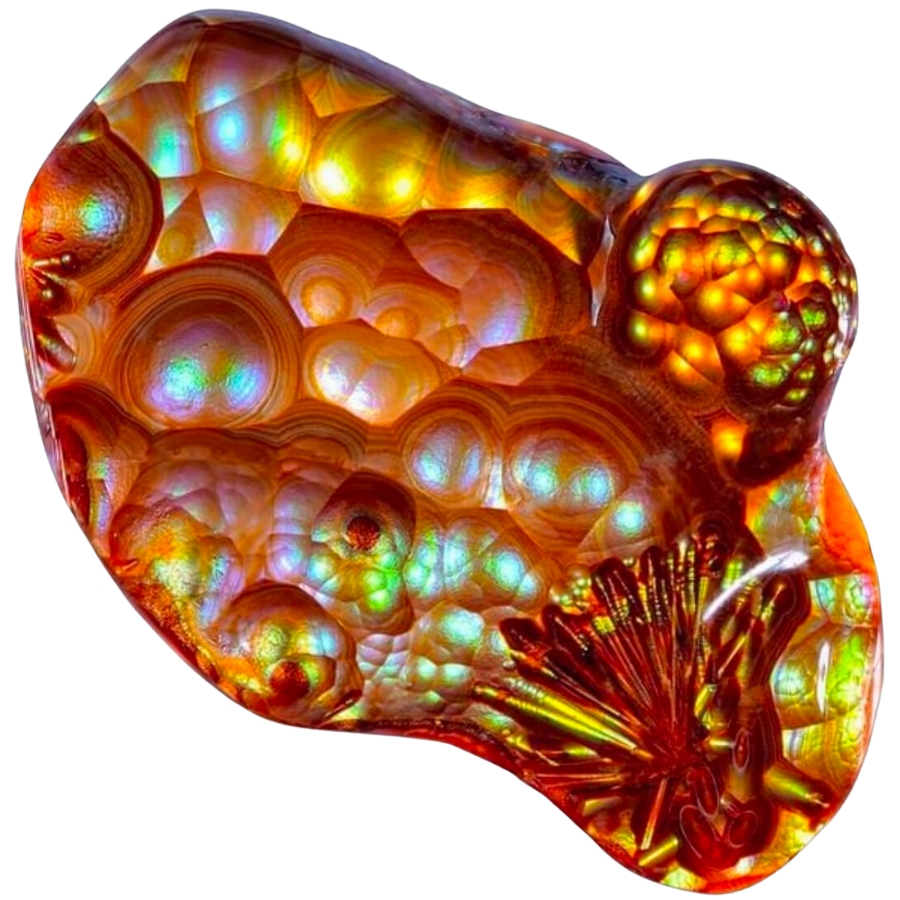
Fire agate is known for its incredible colors and the way it sparkles like fire. It’s got layers of silica and iron oxide that reflect light, creating a fiery effect.
When you look at fire agate, it’s like seeing flames trapped inside. Its colors can range from reds and oranges to greens and golds, all shimmering under the surface.
You might be wondering, “What is fire agate worth?” Well, its value comes from its rare beauty. The more color and sparkle, the more valuable the stone is.
Its fiery iridescence and lively play of color are used in jewelry pieces that are meant to stand out.
Dendritic Agate
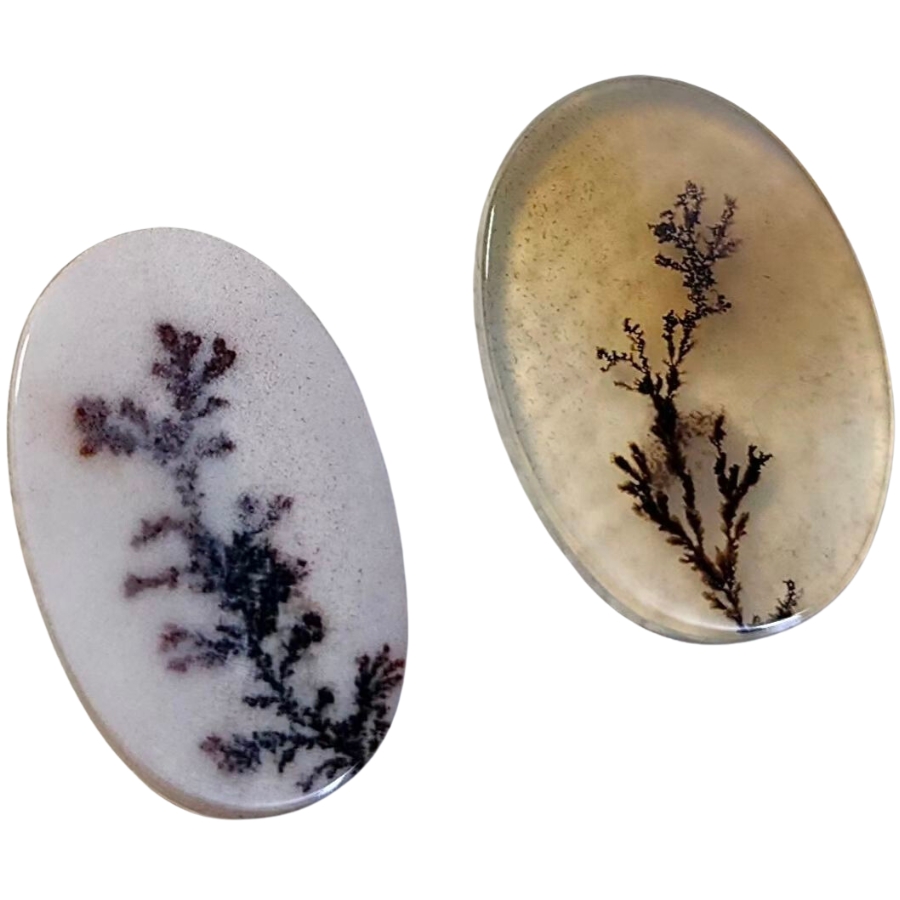
Dendritic agate is known for patterns that look like tiny trees or shrubs. Like moss agate, these patterns aren’t actual plants. They’re made of minerals, mostly manganese or iron oxides.
When you look at a dendritic agate, it’s like peering into a miniature forest or a frosty winter landscape.
The base of the stone is usually translucent to opaque, and the “dendrites”— those tree-like patterns— are often black or brown.
When it comes to how much dendritic agate is worth, it can vary. The more detailed and distinct the patterns are, the more it’s usually valued.
In some cultures, dendritic agate is believed to bring fullness and richness to life.
Crazy Lace Agate
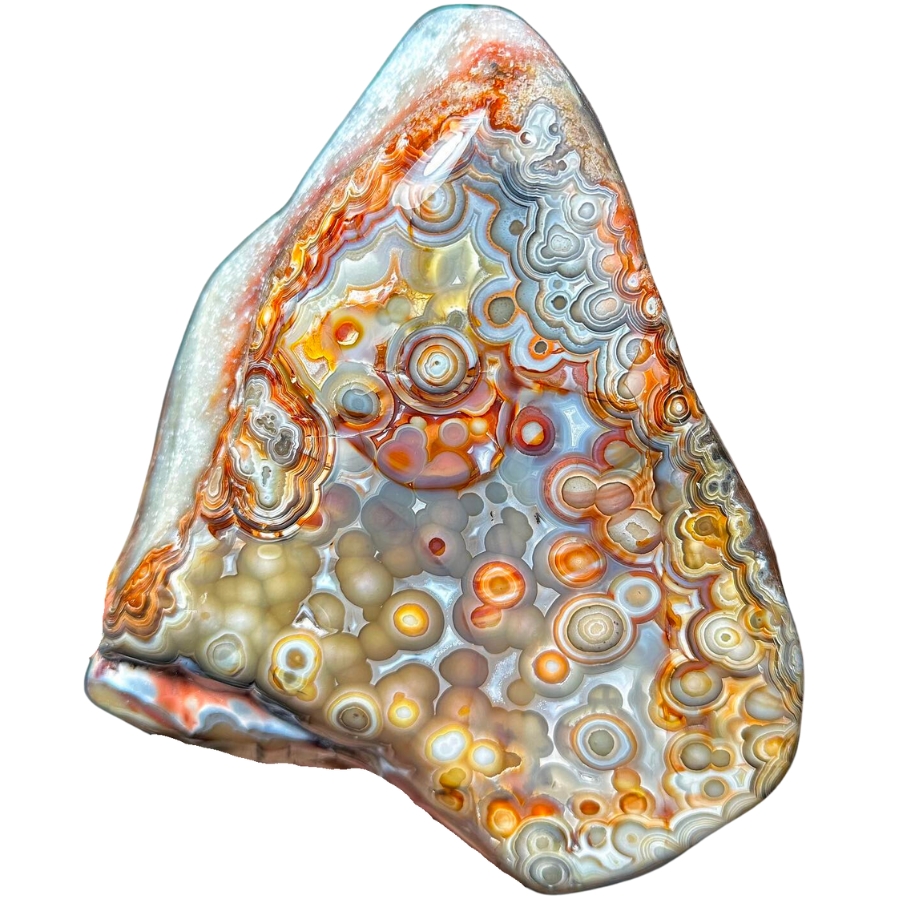
Crazy lace agate is like a party in a rock! It’s got swirls, circles, and all sorts of wild patterns dancing across it.
Its colors can be a mix of red, orange, yellow, and brown, and sometimes even a bit of gray or white.
What makes crazy lace agate stand out is its vibrant and complex patterns. No two pieces are the same. This distinctiveness is a big reason why it’s so valued.
Despite its wild and ‘crazy’ appearance, it’s sometimes called the “Laughter Stone” or “Happy Lace” because of the joy and positive vibes it’s believed to bring.
Laguna Agate

Laguna agate has incredibly sharp and fine banding. It has layers of red, orange, pink, yellow, and sometimes even purple and white all stacked in neat, tight bands.
These bands can form eye-catching patterns, like swirls, loops, and even landscapes.
The different colors of its bands come from various minerals present in the water at the time of its formation.
Laguna agate is considered one of the finest agates in the world due to its exceptional banding. This high regard among agate varieties makes it a prized possession for collectors.
Condor Agate

Condor agate is a real standout. It’s known for its bright, vivid colors and complex patterns.
It has reds, oranges, yellows, and sometimes even blues and greens all swirling together. These colors form in bands or in more random, artistic patterns.
The intensity and variety of its colors is what makes condor agate so special. It’s often used by artists and craftsmen who want to make a statement with their work.
Condor agate’s bold colors and patterns can turn a simple piece of jewelry or art into something really eye-catching.
Fortification Agate (Banded Agate)
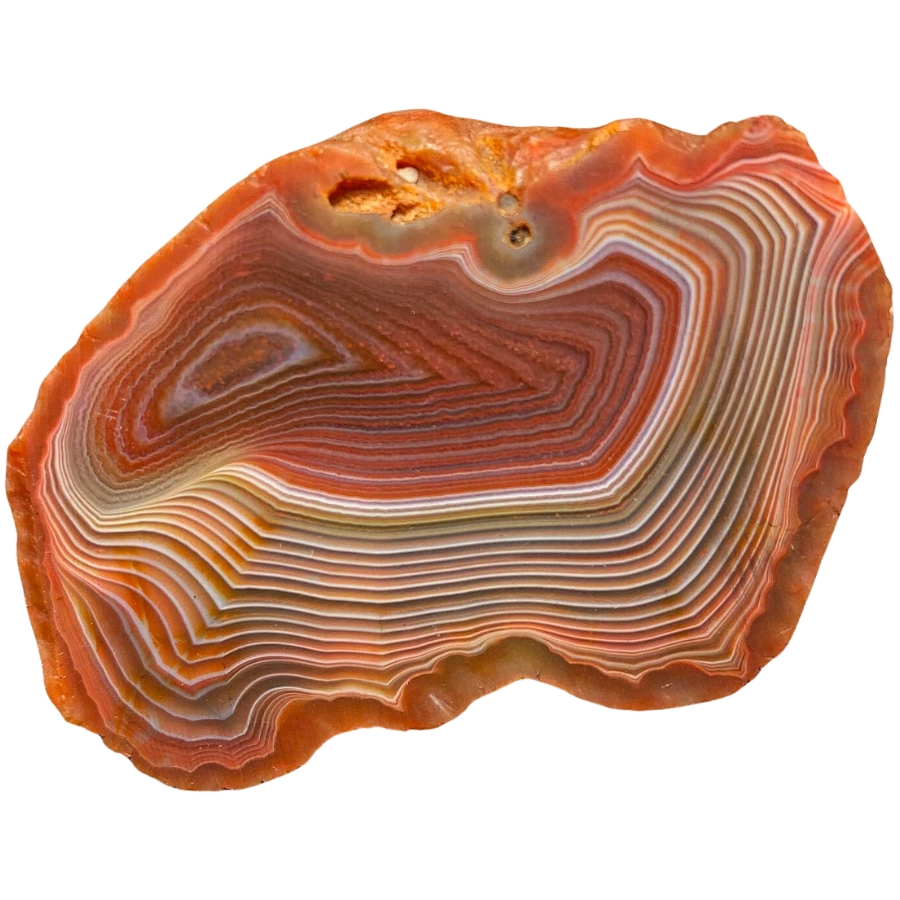
Fortification agate gets its name because the patterns inside it look like the aerial view of a fortified city.
Imagine seeing bands of color forming shapes that look like walls, with sharp angles and curves. They are usually in different colors, making each layer stand out.
If fortification agate is valuable, it’s because of its distinct patterns and colors. Its unique look makes it sought after for jewelry and as a collector’s item.
The clearer and more defined the patterns, the more valuable the stone can be. Some people also believe it can help with relaxation and calmness.
Iris Agate
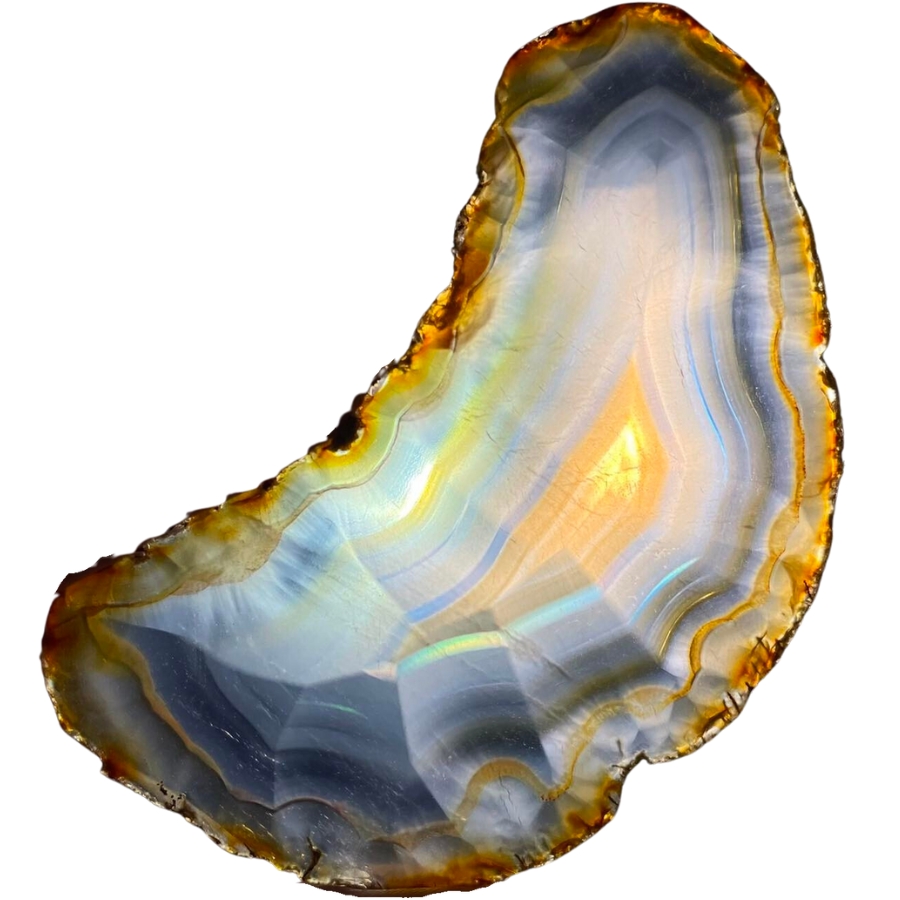
Iris agate looks like a regular agate at first, but when you hold it up to the light, something amazing happens. It shows all these rainbow colors, like light passing through a prism.
This is because it has very thin layers of silica, and when light hits these layers, it splits into all the colors of the rainbow.
The formation of iris agate is similar to other agates, but its layers are super thin, which is what creates the rainbow effect.
The value of iris agate comes from its unique ability to show these colors. In the past, people even used to think it had magical properties because of the way it showed colors. They saw it as a stone of good luck and wonder.
Plume Agate
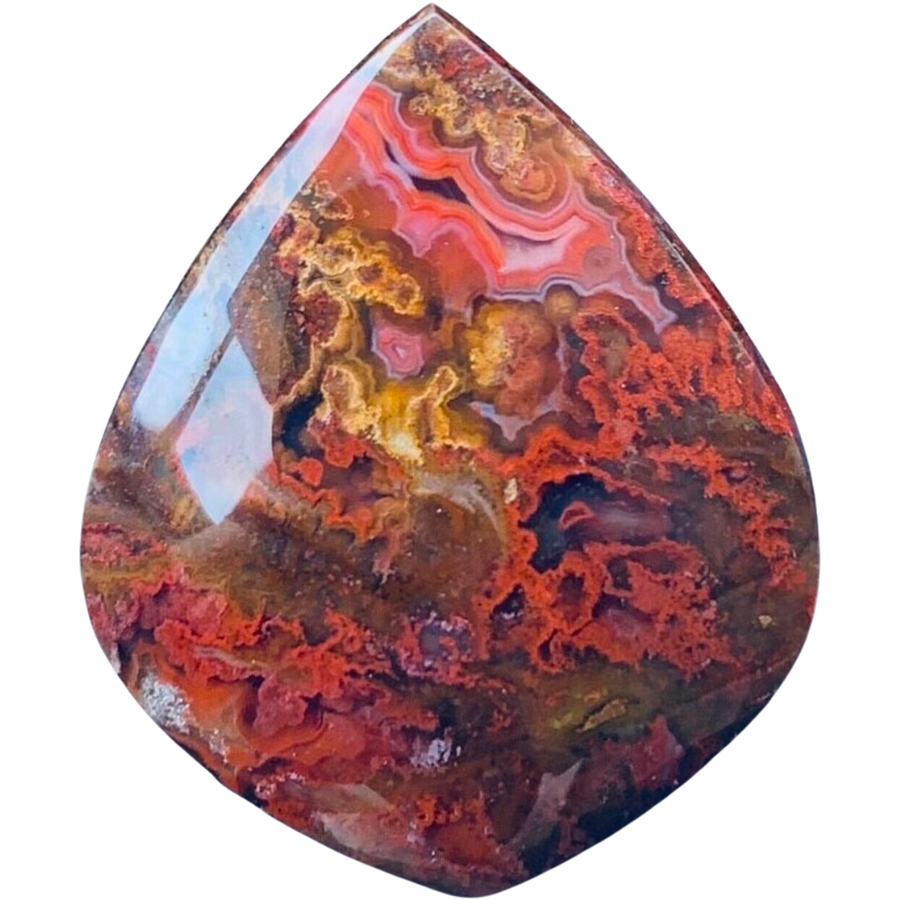
Plume agate gets its name from its patterns that look like soft, feathery plumes. These plumes can be in all sorts of colors: red, black, green, or yellow, set against a translucent or opaque background.
The way these plumes seem to float in the stone makes it look like a frozen underwater scene or like feathers caught in a breeze.
The plumes are made of minerals like manganese or iron oxide, which get trapped in the silica during the agate’s formation and create the feathery patterns.
The price of plume agate can vary depending on how clear and intricate the patterns are. The more detailed and colorful the plumes, the more the stone is usually worth.
Picture Agate (Scenic Agate)
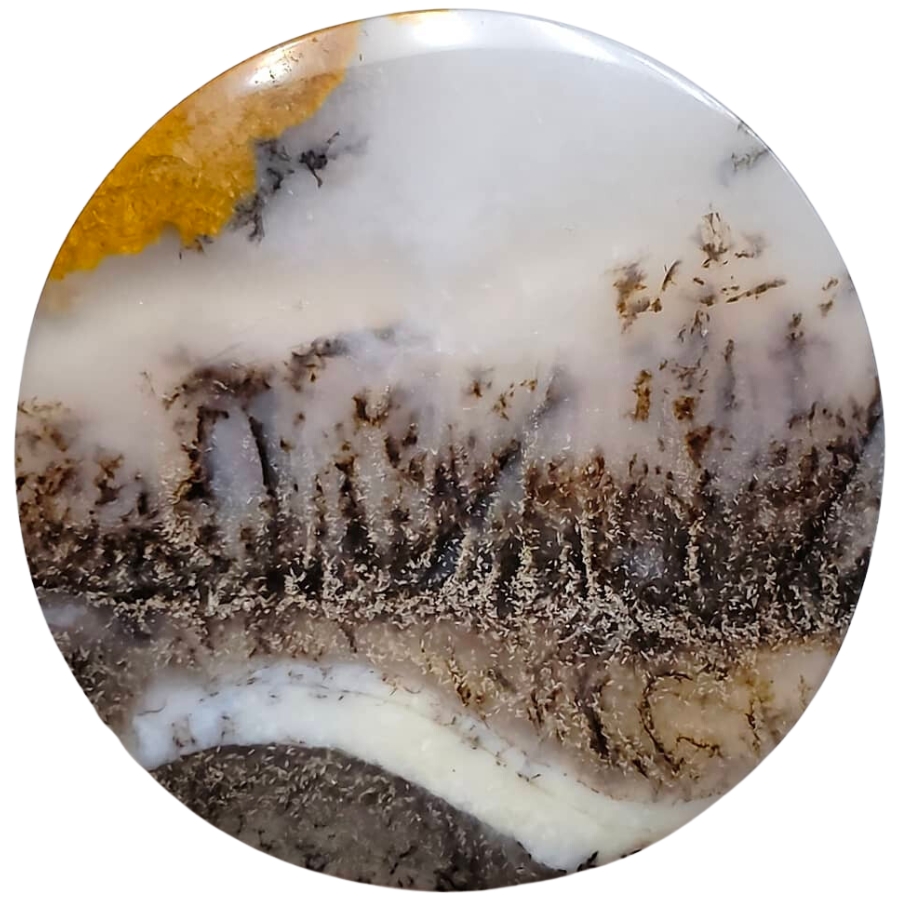
Picture agate is like a snapshot of nature captured in stone because it looks like it has pictures or scenes right inside it.
These “pictures” are actually natural patterns that resemble landscapes, mountains, trees, or even skies. They are usually in different shades of brown, white, and gray against a more translucent background.
The different patterns in picture agate or what’s also called scenic agate are made by various minerals in the water filled with silica that forms it.
If you’re thinking, “What is picture agate worth?“, its value comes from how distinct, clear, and detailed the natural “pictures” are.
Turritella Agate
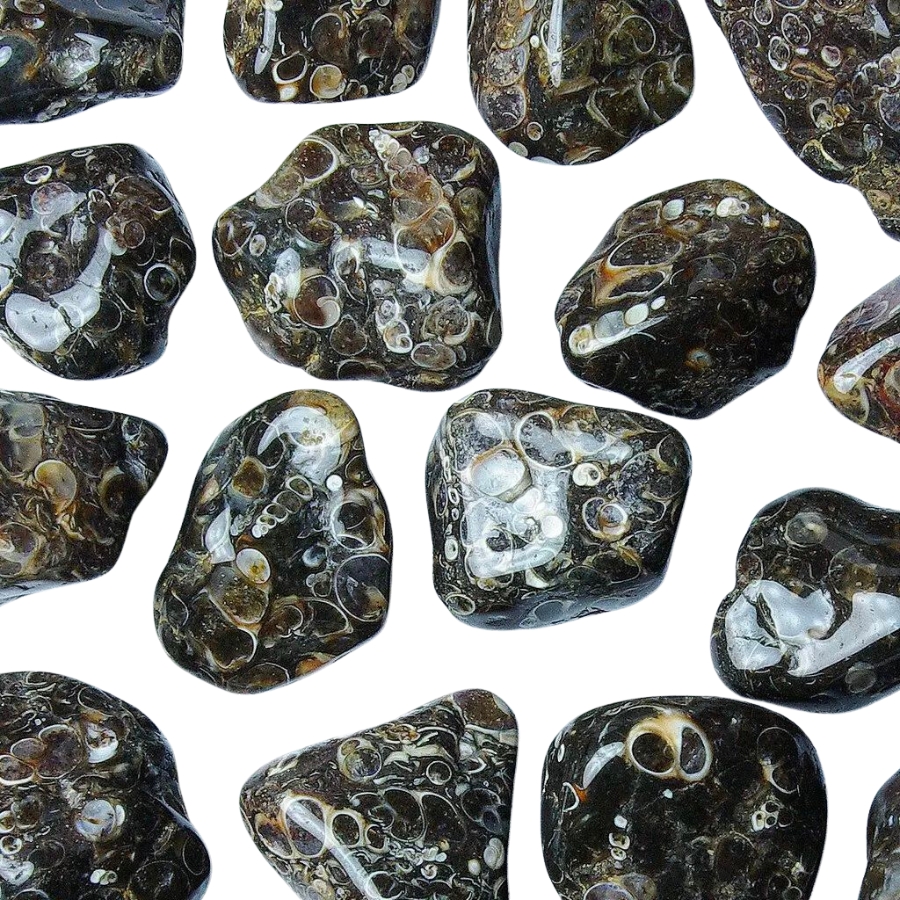
Turritella agate is not your typical agate because it’s full of fossilized snail shells! The shells belong to a creature called Turritella, a type of sea snail.
These shells are tightly packed and create a pattern that looks like a bunch of tiny, swirling towers. The background of the agate is usually a dark, earthy color, which makes the white or cream-colored snail shells really pop.
Over millions of years, these snail shells got buried in sediment and eventually became fossilized. As time went on, silica-rich water flowed through the sediment, turning it into the agate we see today.
The value of turritella agate comes from its unique blend of geology and history. More than a pretty stone, it’s a piece of ancient life preserved in rock.
Fairburn Agate
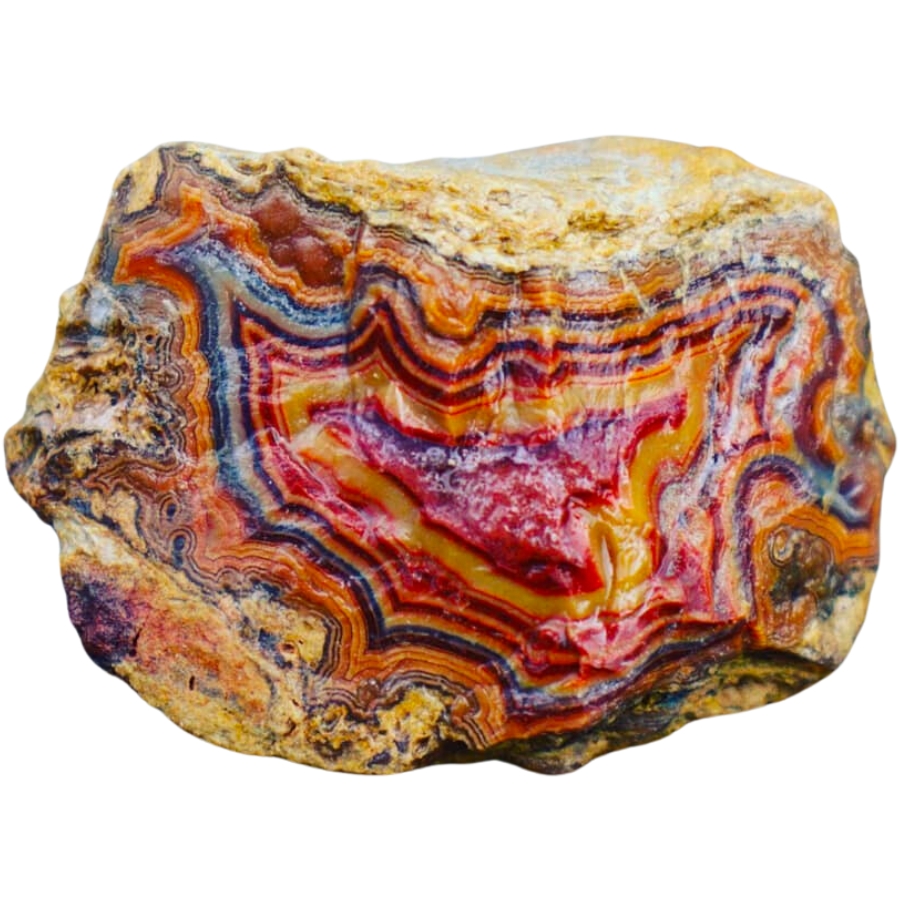
Known for its intricate patterns and bold colors, Fairburn agate is another fascinating type of agate. It usually has bands and swirls of different colors like red, yellow, orange, brown, and sometimes even pink or purple.
What’s special about these patterns is they often look like they’re in layers, creating a 3D effect. It’s like looking at a landscape made of stone.
It’s named after a place called Fairburn in South Dakota. This gives a clue about where it was first discovered.
People value Fairburn agate for the skill it takes to cut and polish it, which makes the patterns and colors really stand out.
Sagenite Agate
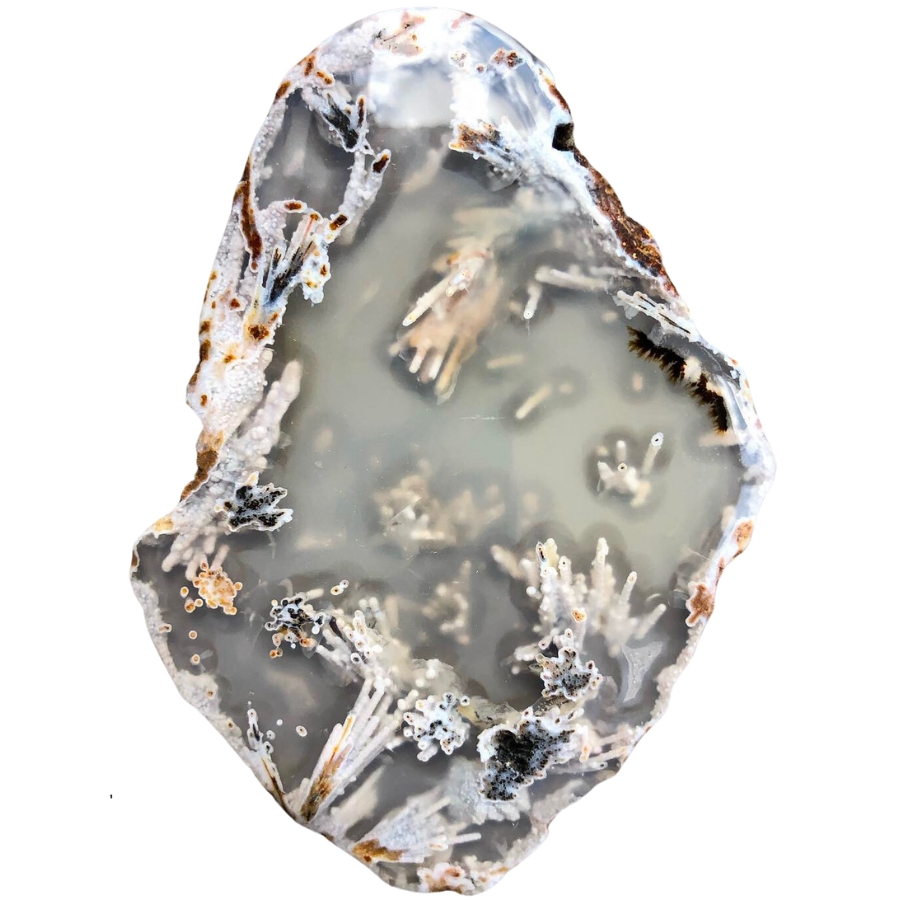
Sagenite agate has needle-like inclusions that look like tiny sprays of crystals inside it. They can be gold, silver, black, or even green, and they spread out in all directions, creating an amazing pattern.
The base of the agate is usually translucent, which lets you see these intricate needle patterns clearly.
These patterns are actually other minerals, like rutile or goethite, that get trapped inside the forming agate. These minerals grow in a crystal shape, looking like needles or hair.
Sagenite agate is often used in jewelry and other decorative items, with some people thinking that its needle patterns look like fireworks or starbursts.
Tree Agate

Tree agate, as its name suggests, looks like it’s got tiny trees or branches inside it. These tree-like patterns are usually green and spread out against a white or light gray background.
The green patterns aren’t actual trees, though. They’re made of minerals like chlorite or manganese.
Each piece of tree agate is different. You won’t find two that are exactly the same. It’s valued for its looks and it’s often used in jewelry and decorations.
The key factors in our recommendations are:
- The deep experience and understanding of our team about the area
- Recommendations from local groups and clubs
- How easy it is to get the a particular location
- Safety and potential hazards when collecting
- Weighing private and public locations
- The ability for both experienced and novice agate enthusiasts to find great samples
With these factors in mind we’ve been able to put together a fantastic list that just about anyone can use!
Kids. Beginners. Pros. Doesn’t matter. This book has become the go-to because it works for everyone.
Magy put it bluntly: “Identify rocks, crystals and minerals is so easy now!”
That’s not by accident, the photos are crisp, the callouts are simple, and the design is rugged enough to throw in a backpack without worrying. Whether it’s your first geode or your hundredth, this guide keeps the fun part simple: finding more treasures.
The Best Spots To Find Agates in Montana
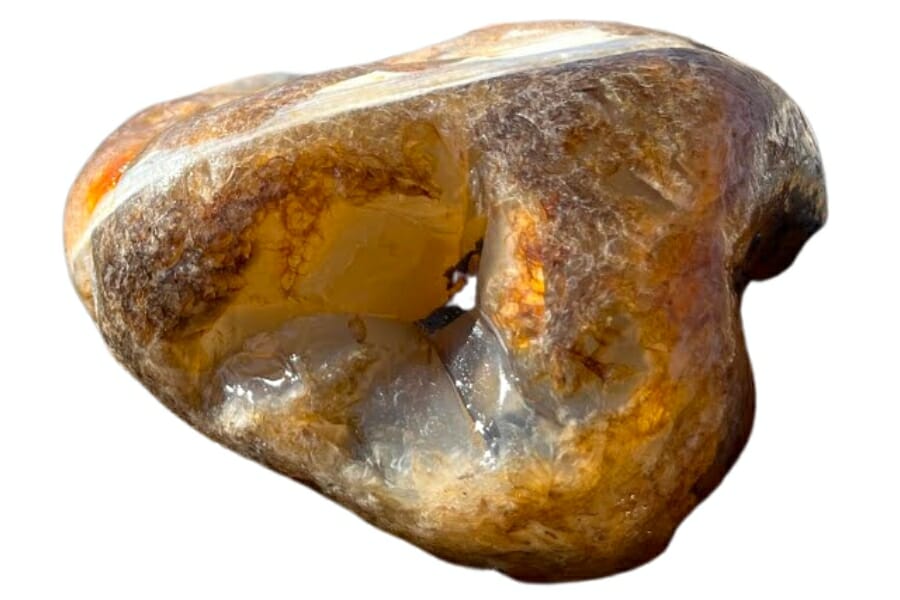
As a state with diverse geological landscapes, there are plenty of gem mine sites in Montana that are worth visiting and exploring. But if you’re looking specifically for agates, below are the excellent sites that we highly recommend for you:
Always Confirm Access and Collection Rules!
Before heading out to any of the locations on our list you need to confirm access requirements and collection rules for both public and private locations directly with the location. We haven’t personally verified every location and the access requirements and collection rules often change without notice.
Many of the locations we mention will not allow collecting but are still great places for those who love to find beautiful rocks and minerals in the wild without keeping them. We also can’t guarantee you will find anything in these locations since they are constantly changing.
Always get updated information directly from the source ahead of time to ensure responsible rockhounding. If you want even more current options it’s always a good idea to contact local rock and mineral clubs and groups
Yellowstone River
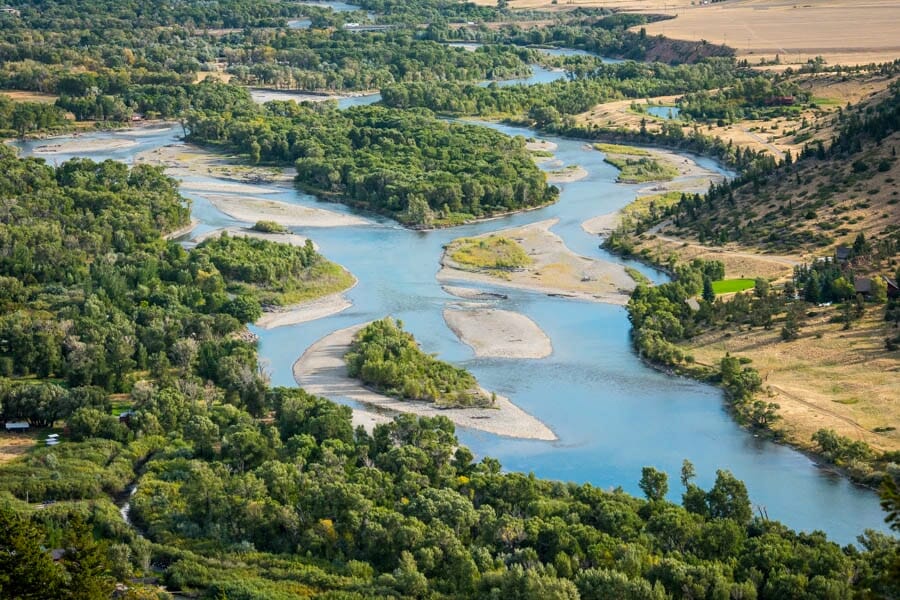
Yellowstone River is one of Montana’s natural treasures. Starting in Wyoming, it flows right through our state for about 700 miles, making it the longest undammed river in the U.S. This mighty river winds its way through a variety of landscapes, from towering mountains and deep canyons to broad valleys and vast plains.
The river’s geology is made up of a mix of volcanic rock, sediment from ancient seas, and deposits left by glaciers. This makes it a great spot to find all sorts of interesting rocks and minerals, including the beautiful agate.
If you’re planning to go here, the Yellowstone River is fairly easy to get to, with many towns and highways located along its path. There are also plenty of parks and public lands along the river, making it a great place for all sorts of outdoor activities. But before going here, take time to review Montana’s latest collecting guidelines.
Where we found agates in the Yellowstone River
You can find the famed Montana moss agate in the gravel of the Yellowstone River and its tributaries.
Mount Blackmore
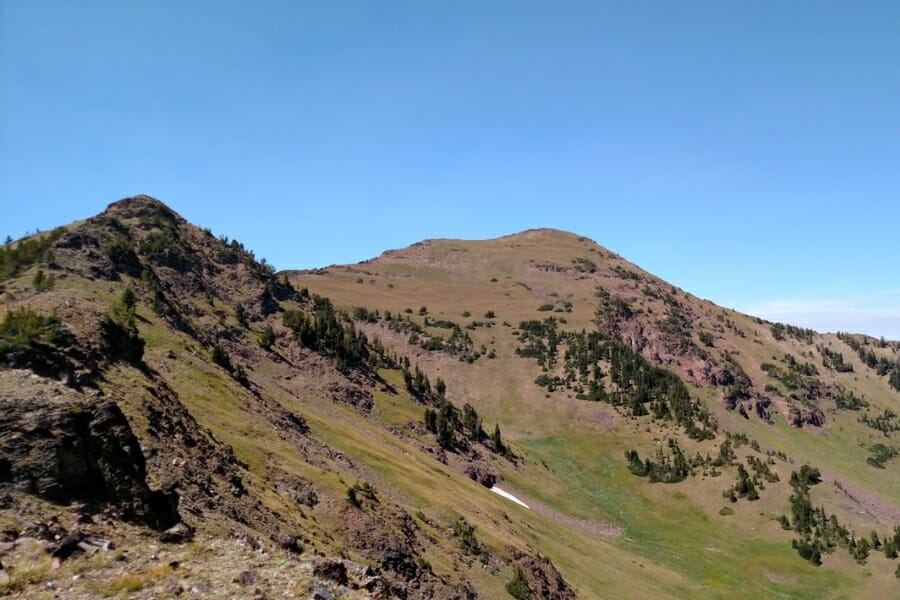
Mount Blackmore is an impressive peak located in the Gallatin Range. It stands tall at about 10,154 feet, offering stunning panoramic views of the surrounding landscape. The terrain around it is rugged and wild, with steep slopes, rocky cliffs, and thick forests.
Geologically, Mount Blackmore is really interesting. It’s made mostly of sedimentary rock, formed from ancient mud and sand that hardened over millions of years. This makes it a great place to find cool rocks and minerals like agates.
Reaching Mount Blackmore is not too difficult since it’s located near Bozeman City, and there’s a trailhead in Hyalite Canyon that leads directly to the peak. However, the hike is about 12 miles round trip, so it’s best suited for people with some hiking experience.
Where we found agates on Mount Blackmore
Agates can be found at the summit of Mount Blackmore, exactly on Elevation 10,196’.
Jefferson River
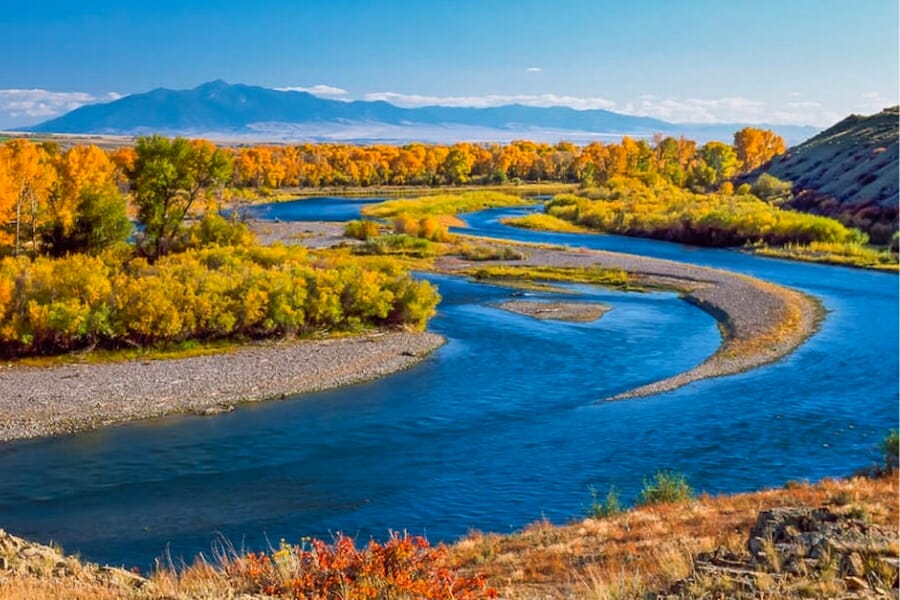
Jefferson River is an important waterway that is about 83 miles long. As one of the major tributaries of the mighty Missouri River, it winds its way through a range of landscapes— from mountain valleys to rolling plains. Aside from offering awesome views, it’s also a great spot for fishing and other outdoor activities.
Geologically, the area around the Jefferson River is made up of a mix of volcanic rock, sedimentary deposits, and other materials that were shaped by ancient glaciers and rivers. One neat thing you can find in this area is agate.
Jefferson River is close to several towns, including Three Forks and Cardwell, so it’s pretty easy to get to. There are various access points along the river for boating and fishing, too.
Where we found agates in the Jefferson River
Explore the gravels of the Jefferson River near Silverstar to find stunning specimens of agates.
Pryor Mountains
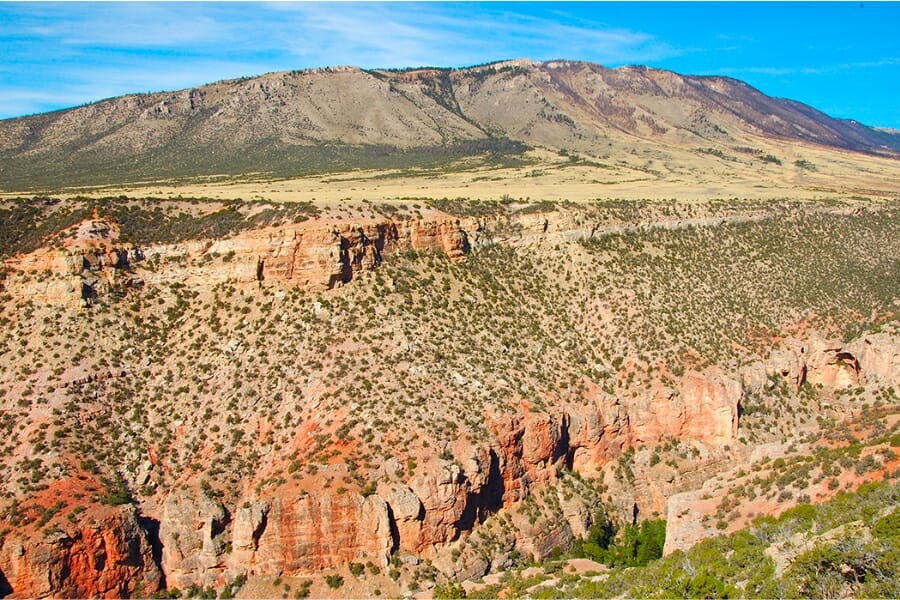
The Pryor Mountains are a striking range that extends from our state a bit into Wyoming. They rise impressively from the surrounding plains, reaching up to about 8,800 feet at their highest point. Its terrain is rugged and diverse, with deep canyons, high plateaus, and lots of interesting rock formations.
These mountains are made up of several types of rocks, including limestone, sandstone, and shale, which were shaped over millions of years by natural forces like wind and water. Among the amazing finds you can stumble upon here are captivating agates.
The journey to the Pryor Mountains is a bit of an adventure. It’s fairly remote, and some of the roads can be rough. It’s about a two-hour drive from Billings, the nearest large city.
Where we found agates in the Pryor Mountains
We recommend exploring the area gravels and prospects of Pryor Mountains, especially on the northeast side, to find amazing agate samples.
Big Horn Canyon
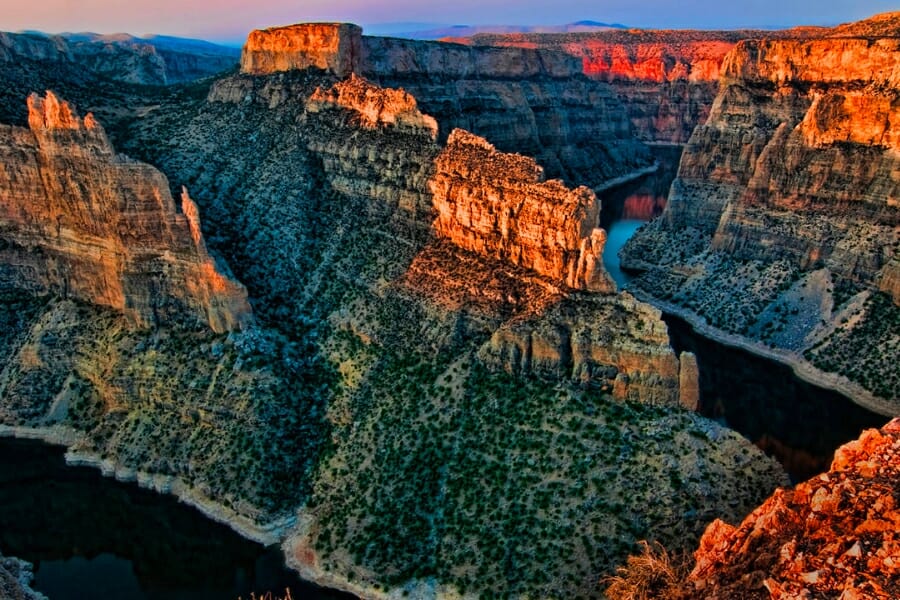
Big Horn Canyon is a stunning geographical feature located in southern Montana and northern Wyoming. Part of the Bighorn Canyon National Recreation Area, this deep, winding canyon is carved by the Bighorn River and extends approximately 71 miles.
Its landscape is truly dramatic, with towering cliffs, rugged slopes, and the river’s blue ribbon winding its way through the canyon floor. The canyon’s walls are a showcase of different rock layers, including sandstone, shale, and limestone, all formed over hundreds of millions of years.
Fortunately, getting to Big Horn Canyon isn’t too difficult. The nearest town, Hardin, is about a 90-minute drive away. There are visitor centers, campgrounds, and several hiking trails throughout the area, making it accessible for explorers.
Where we found agates in Big Horn Canyon
You can find agate if you explore the area gravels of Big Horn Canyon, especially along its rim.
Other Great Places To Find Agates in Montana
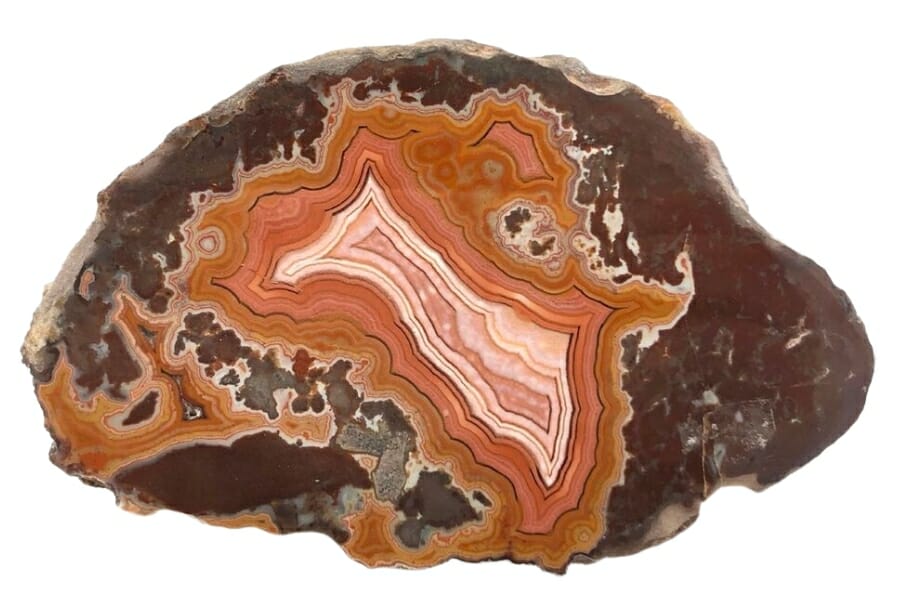
Aside from our top recommended sites here, there are plenty of other excellent places where you can find agates in Montana. They’re listed by county below for your easier reference:
Our recommendations by county
| County | Location |
| Beaverhead | Red Rock River to Red Lock |
| Beaverhead | Sawmill Creek to the Continental Divide |
| Big Horn | Area surfaces, especially along the canyon rim, of Hardin |
| Big Horn | Shore of Little Bighorn River |
| Big Horn | Whitman Coulee |
| Big Horn | Rotten Grass Creek |
| Big Horn | Doghead Creek |
| Carbon | North to the Morrow/Frates diggings |
| Carbon | Rimrocks overlooking Bighorn Canyon |
| Cascade | Sun River |
| Chouteau | Chip Creek to Eagleton area |
| Custer | Pompey’s Pillar gravel banks |
| Custer | Hysham and in the hills near Sarpy Road |
| Custer | Pumpkin Creek to Tongue River |
| Custer | Ash Creek to Powder River |
| Dawson | Regional surfaces, draws, washes of Glendive |
| Dawson | Cracker Box Creek gravels |
| Dawson | Thirteenmile Creek |
| Fergus | Flatwillow Creek |
| Garfield | Big Dry Creek |
| Garfield | South Fork of Lodgepole Creek |
| Lewis | Elk Creek to mouth of Smith Creek |
| Madison | Surfaces of all area hills in SIlverstar |
| Park | Area draws, creek. beds, hillsides of Carbella |
| Park | Area land surfaces, gravels, stream beds of Gardiner |
| Park | Area hillsides and ranchland in Livingston |
| Park | Area land surfaces of Miner |
| Park | Gallatin National Forest Campground |
| Phillips | Whitewater Creek |
| Powell | Kleinschmidt Lake |
| Prairie | Side tributaries of Craker-box, Hatchet, Sand, and Whoop-up creeks |
| Treasure | Hills of Hysham |
Additional areas you can find agates
Make sure to pay extra attention to the following areas where agates usually found, especially if you’re visiting or exploring broad areas with different kinds of land and waterscapes.
Rivers and River Banks
Rivers and river banks are like treasure chests, especially in Montana. That’s because rivers are great at moving rocks from one place to another. As a river flows, it picks up small rocks from the mountains and carries them downstream. These get rounded and polished as they tumble along the river’s course.
When these rocks reach river banks, they often get left behind. That’s why river banks can be full of a variety of finds, including agates! Rivers like the Yellowstone and the Bighorn in Montana have been known to carry amazing agate specimens.
Streams and Creeks
Just like rivers, streams and creeks in Montana can be amazing places to hunt for agates! These smaller waterways also do a great job at picking up and moving rocks, which means the edges of streams and creeks can be full of all sorts of interesting stones, including beautiful and colorful agates.
Lake Shores
Lake shores are often fed by streams and rivers that carry rocks and minerals from higher elevations. As water flows into the lake, it drops these rocks, including agates, onto the shore.
Over time, waves from the lake can polish these rocks, making them smooth and shiny. That’s why you can often find beautifully polished agates along lake shores. Montana, with our many lakes here, is a great place for this kind of treasure hunt!
Common Agate-Hunting Questions
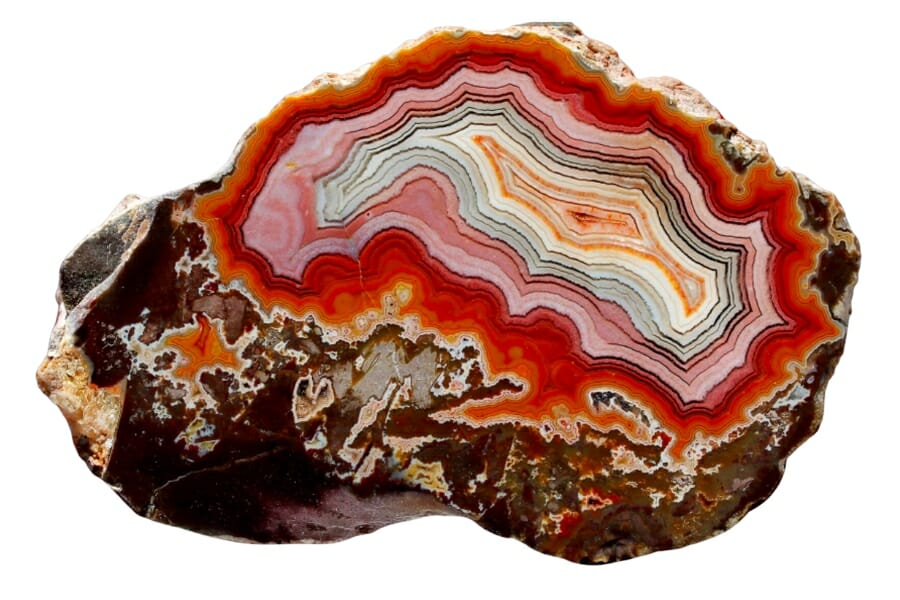
Now, you might want to know the answer to the most common question when it comes to agate hunting in Montana. Don’t worry, because we’ve got you covered!
Is it illegal to collect agate in Montana?
In general, it is legal to collect agate in Montana for as long as you do so in compliance with our state’s local collecting guidelines.
You have to be aware of the rules and restrictions in the specific area you’ll explore, especially if it’s a public land, like a state park where collecting is not permitted. Also, secure any necessary permissions or permit before exploring and collecting from any private land.
The Best Places To Buy Agates In Montana
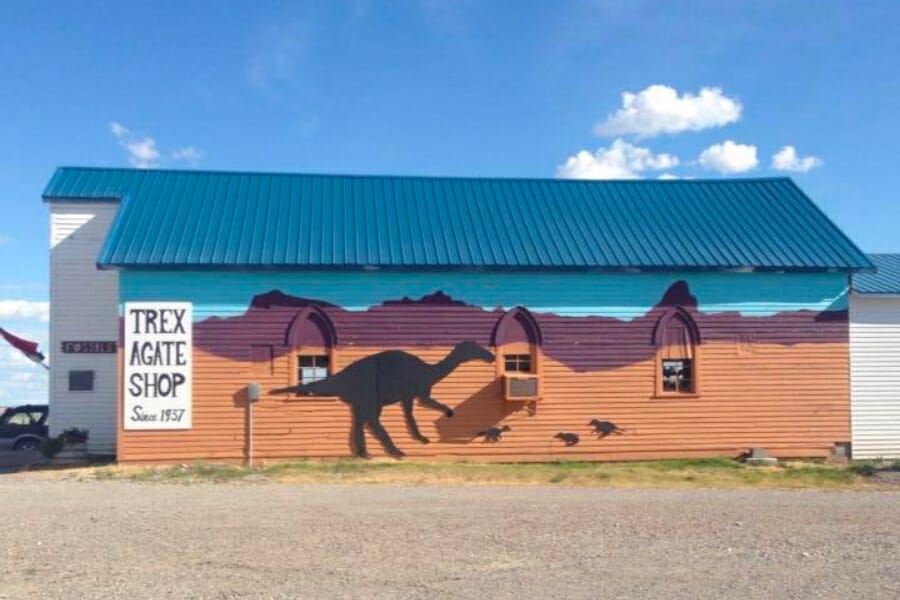
If you have limited time and energy for any serious exploration to find agate in Montana, you can opt to visit our trusted local agate shops in the area. Below are some examples of the best ones that we have:
- Craggy J Natural Arts – 7513 Montana Hwy 35, Bigfork, MT 59911
- Earth’s Treasures – 25 N Willson Ave # B, Bozeman, MT 59715
- Kehoe’s Agate Shop – 1020 Holt Dr, Bigfork, MT 59911
- Trex Agate Shop – 5500 US-89, Bynum, MT 59419
- Windy Way Rock Shop – 5237 US-89 #13, Livingston, MT 59047
If you have any recommendations for our list please leave a comment below!

